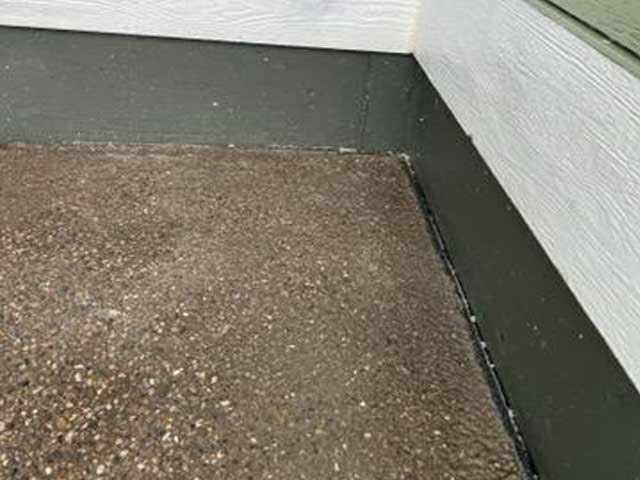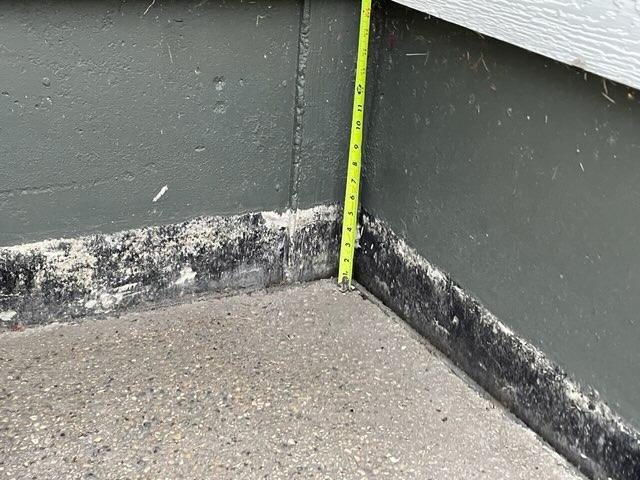Call anytime
-
-
Send email
[email protected]
-
Serving
Southeastern Michigan

Polymer foam concrete leveling offers a versatile solution for addressing uneven surfaces in various settings. From residential driveways to commercial sidewalks, explore the diverse applications of this innovative service below
Around the Home:
Commercial Applications:
Uneven Concrete Can Be Frustrating and Unsightly, but Understanding the Common Culprits Can Help You Prevent Future Issues. Here’s a Breakdown of Some of the Most Frequent Causes of Concrete Settling and Unevenness:
Soil Issues:
Water Issues:
Construction Issues:
Other Causes:
Proactive Identification of Uneven Concrete Allows You to Address the Issue Early On and Prevent Further Problems. Learn to Identify Problem Areas and Address Them Proactively with Polyjacking Concrete Leveling. Here’s How to Identify Potential Problem Areas Around Your Property.
Start With a Visual Inspection: Walk Around Your Property and Take Note of Any Areas Where the Concrete Appears Uneven, Cracked, or Sloping Downwards. Focus on Common Areas Like Driveways, Walkways, Patios, or Pool Decks.
Use a Straight Edge: Place a Long, Straight Board (Like a Level) on the Concrete Surface. Any Gaps Between the Board and the Concrete Indicate Unevenness.
Measure the Difference (Safety Note: Be Careful While Walking on Uneven Surfaces to Avoid Tripping Hazards): Use a Ruler to Measure the Difference in Height Between the Highest and Lowest Points of the Uneven Area. Generally, Concrete Leveling Is Recommended for Areas That Have Sunk or Settled More Than ½ Inch.
Here Are Some Items to Take Note of on Your Visual Inspection:
Reclaim Your Level Surfaces! Our Polyurethane Foam Concrete Leveling (Polyjacking) Service Is a Fast, Safe, and Long-lasting Solution to Address Uneven Sidewalks, Walkways, Driveways, or Sunken Patios. Polyjacking Offers a Minimally Invasive Way to Lift and Level Your Settled Concrete Slabs, Restoring Functionality and Curb Appeal to Your Property.
Let Suburban Basement Walk You Through the Steps We’ll Take and Get You a Free Estimate Today!
Numerous Methods for Concrete Leveling Are Available, But Polyjacking Stands Out Due to Its Unique Combination of Benefits, Making It Our Preferred Solution.
Here’s a Quick Overview of Other Options:
Ready for a Free Assessment to See If Polyjacking Is the Right Solution for Your Uneven Concrete? Call Us Today!
Discover the Fast and Long Lasting Results Achieved with Our Polyjacking Service, Transforming Uneven Slabs into Level Slabs for Home and Business Owners Like You.


Heave and Frost Heave: Upward Movement of Concrete Slabs Caused by Soil Expansion, Frost, or Tree Roots.
Settle, Settled, and Settlement: Downward Movement of Concrete Slabs Due to Erosion, Moisture Changes, or Improper Construction.
Slope and Slope Correction: The Slight Slant of Concrete for Proper Drainage. Adjusting This Slope Is Called “Slope Correction.”
Void and Void Filling: Empty Spaces Beneath Concrete Slabs. Filling These Voids Restores Support and Prevents Further Settlement. Polyurethane Foam Is a Common Solution for This.
Lateral Movement: The Sideways Shifting of Adjacent Slabs, Often Occurring as a Result of Leveling One Slab, Which May Necessitate the Leveling of Adjacent Slabs. Our Experienced Technicians Consider the Possibility of Lateral Movement While Assessing the Project to Ensure Evenness and Stability.
Curing and Curing Time: Allowing Materials to Reach Full Strength. Mudjacking Takes 24 Hours, While Polyurethane Foam Cures Within Hours.
Sealing: Applying Sealant to Protect Concrete from Moisture Penetration.
Expansion Joint: A Deliberate Gap Between Slabs to Allow for Movement Due to Temperature Changes. Sealing These Is Crucial.
Mudjacking (Slabjacking): Lifting Concrete with a Slurry Mixture. This Method May Require Repeated Applications Due to Potential for Re-Settlement.
Polyjacking: A Reliable and Long-Lasting Solution for Lifting and Leveling Concrete Using Polyurethane Foam. It Addresses Voids and Is More Cost-Effective Than Replacement.
Winter:
To Ensure Long-Lasting Results, Concrete Leveling Projects Are Typically Paused During Winter Months When Frost Heave Can Potentially Cause Re-Settlement of the Leveled Concrete.
Heavy Rain:
Poses Risks to the Leveling Compound and Equipment, Hindering Proper Curing. If Heavy Rain Is Forecasted or Occurs During Your Scheduled Exterior Concrete Leveling Appointment, We May Contact You to Discuss Rescheduling. This Ensures That the Leveling Compound Can Cure Optimally Under Suitable Weather Conditions.
Get Ready for Your Assessment : Save Time and Ensure a Thorough Assessment
What Happens During the Assessment?
Preparing for Your Repair:
What to Expect After the Repair:
Maintaining Your Leveled Concrete:
Foundation Wall Cracks: Uneven Concrete Can Allow Water to Pool. If the Pooling Water is Entering the Basement You Might Have a Foundation Wall Crack.
Ask about our Lifetime Warranty
Serving Southeastern MI
Copyright © 2024 | Privacy Terms | website by Friendly Design